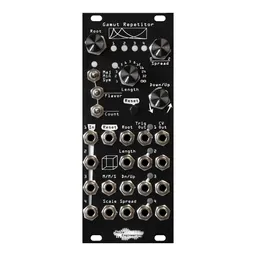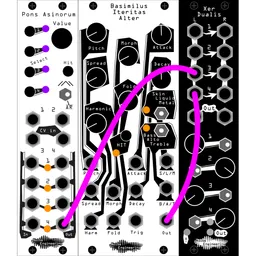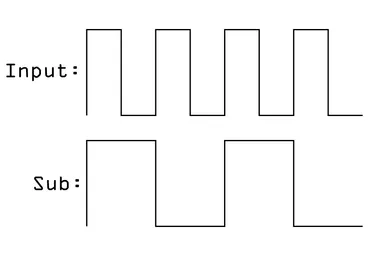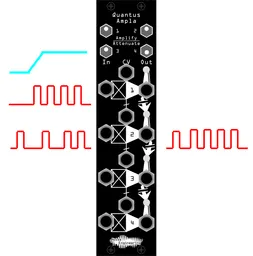We make a module called Extra Mullet. It’s a buffered mult, but with a twist: it’s inputs also go to a unity mixer section, which opens up some fun possibilities. Today, we’ll take a look at what you can do with those outputs (or any other unity mixer you may have in your system).
What is a unity mixer?
A unity mixer is simply a mixer with no level controls. You put things in, and you get a mix of them out at roughly the volume you put them in. This may seem limiting, and while level control is important for some patches, it’s not for everything. There are plenty of places where unity mixers work really well, so let’s look at some examples!
Gate/trigger combining
This is a technique I use all the time in my own patches. What’s so great about it is that it fits in with patches you may already be making: say you’re splitting a clock signal to a couple of modules with input 1 on EM. You can patch a simple trigger sequence to input 2, and then come out of the 1 2 out and get a whole new sequence! This one’s great with something like our old Integra Solum, too: mult and combine a bunch of funky clock divisions and you’ll have unique rhythms ad infinitum!
Repeating CV+random CV=slight variations every time
Hearing the same thing over and over again can make our ears bored. If you have a modulation sequence, let’s say from Mimetic Digitalis, and you want to add some excitement to it, you can combine its output with something like an attenuated Clep Diaz for some ever-changing randomness. I always love to modulate Fold on my BIA, so, as an example, we could send a sequence from MD’s first output to EM’s first input, then run CD’s output through an attenuator and into EM’s second input. Patch out of the 1 2 out again and into our BIA. We can attenuate that CD signal down quite a bit, but it’ll add a little bit of randomness and variation every time, especially if CD and MD are running on different clocks.
What’s especially cool about this is that if you fill up EM’s inputs with CV you get 7 CV combinations out, not including our now-multed original signals! Attenuate them to taste and you’ve got a whole bunch of new and fun modulation sources from just four inputs.
Learn more:
Unusual envelopes
There are a lot of envelope generators in Eurorack, but you can make strange and more complex envelopes by mixing multiple envelope signals together. One of my personal favorites is mixing a short decay envelope with a long decay envelope: this gives you a sharp transient and a long, smooth decay. You can also combine envelopes controlled by different triggers/gates to get rhythms that also cover new shapes, and you could even mix your gate signals straight in to get even more interesting modulation. Let’s try that out. Here, I’m using Pons Asinorum and some polymetric triggers to create some interesting modulation patterns for Loquelic Iteritas.
Got your own uses for Extra Mullet? Tag us in a post on Instagram so the world can see!






